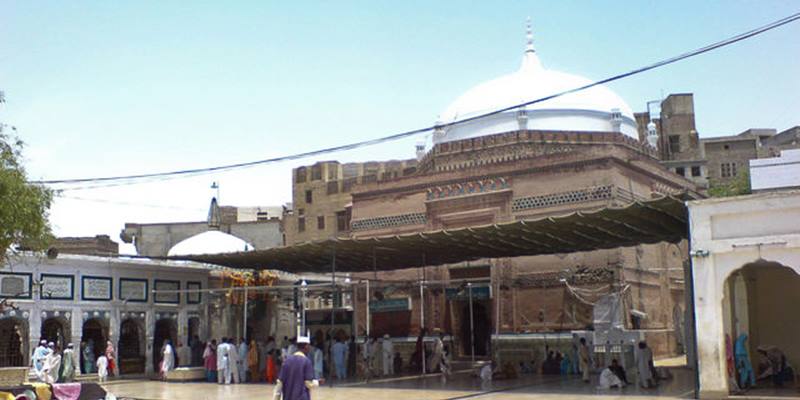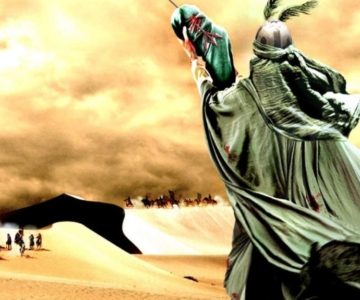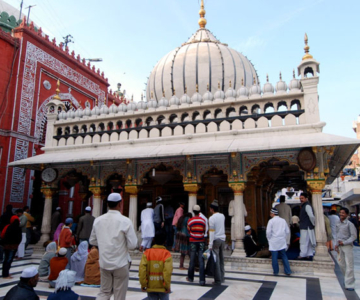This morning arrived with the shocking news of the recent barbarity played out in Pakpattan (formerly known as Ajodhan) when two criminals left bombs outside the shrine of Baba Farid. Eight innocent people, returning from morning prayer, lost their lives and about 2o were injured.
Baba Fariduddin Ganje Shakar’s shrine was the latest victim of terrorism. We have now entered into a decisive phase of the ongoing battle. What is the purpose of attacking a shrine other than the fact that it defines the historical reality of a peaceful and secular Punjab. Baba Farid is revered by Muslims, Sikhs and Hindus of the subcontinent. He is the leading light of Chishti school of Sufism in Indo-Pak subcontinent. Other than his status as a mystic, Baba Farid is the pioneer of modern Punjabi language as it was innovated and refined in the 12th century. The Punjabis across the world consider him as a cultural and spiritual master.
We condemn this brutal attack, this sheer cowardice and barbarity. It is time to fight against this menace of sectarianism and scaring the people of Pakistan. We have lunatics – now dangerous criminals – who are hellbent to destroy our centuries’ old culture.
I am reproducing sections of an article from Manzur Ejaz which narrates the contribution of Baba Farid to the Punjabi language and how times were a commentary on the changing social contours of the Punjab.
Before northern invasions the priestly classes and the rulers used Sanskrit as spoken and written language while the common folks used Apabhasha which means a corrupted language. Some scholars hold that it was derived from Prakrit. However, a few linguists claim that in Punjab neither Prakrit nor Apabhasha was in use. The language in Punjab was on the periphery of both and was close to Baba Farid’s language written in 12th century which means it was Punjabi as such. Incidentally, Baba Farid has rarely borrowed a word or term from foreign languages like Persian and Arabic: his entire poetic discourse is purely in indigenous language of the people of the Punjab.
Baba Farid is considered the forefather of Punjabi language. As a matter of fact he can be honored as the first poet who wrote in Punjabi people’s language for the first time in centuries. What we have from the previous periods is written in Sanskrit which was the language of the elite. Of course the great Sanskrit writer like Panini created everlasting pieces of literature in Punjab but we don’t find anything written in people’s language. Most probably, it must have been lost because other than Sanskrit manuscripts there was no institution or mechanism to preserve people’s literature. Therefore, Baba Farid’s thought provoking poetry is the first written document which is handed down to us with courtesy of Sikh Gurus’ commitment to preserve Punjabi classics.
Baba Farid’s poetry has many philosophical dimensions but we will limit ourselves to a few couplets which portray the conditions of people in Punjab at that time. Baba Farid was born in Punjab (Khotowal near Multan) and after his education and rigorous training he left the comfortable life of Delhi after he was made the head of powerful Chishtia sect and settled back in Punjab. He chose Pakpattan (then Ajodhan) where he had to fight with ruler and Qazi of the city. Baba Farid had to face socio-economic and ideological difficulties like a common man at the hands of the new alien rulers and their religious establishment.
In one of his couplet he characterizes the relationship between the peasants and the plundering rulers:
Farida, eeh vis gandlan dhrian khand liwaR
Ik rahidey reh gaey ik radhi gaey ujaR
(O Farid, the poisonous stems are sugar coated. Some tilled the land and the others plundered)
In the first line of the couplet the stems of growing plant are depicted to be wrapped up in sugar. To the tiller the plants of his crop look like sugar because they will bring him sweetness of life. But he is unaware that these plants will become poison because his oppressors will take them and gain strength from his (tiller’s) produce and to oppress him more. In other words the tiller is producing for his death and not for life.
In the second line Farid overtly pronounce what was implicit in the first line by saying that some continue plough and tilling while others keep on plundering. On should note that Farid’s words describe the relationship between tillers and oppressor as an ongoing process in continuum for centuries.
In another couplet Baba Farid describes the nature of class society and its uneven distribution of wealth
Iknan aata aggla, iknaN nahin loon
Aggay paey sunjansan chotan khasi kaon
(Some have abundance of flour and some don’t have even salt
The time will show who is hit more)
In this couplet the first line is a straightforward depiction of the economic disparity between the rich and poor in Punjab of that time: Some have so much that they cannot possibly consume while the others have nothing. Here flour symbolizes the material and personal freedom. The society around Farid was comprised of large population of slaves and impoverished peasants, artisans and workers. They had neither material source to sustain themselves nor to act freely.
The second line of the couplet is complex and can be understood in many ways. Of course if we go by the establishment religious doctrine it means that the Day of Judgment will tell who is punished and who is not. But, since Farid does not adhere to such a ritualistic religion the line refers to the process of history. In other words time will tell which class will prevail and which one will be destroyed. Farid has referred to destruction of one class of rulers by another. In the following couplet he portrays the temporary nature of power:
Jin loein jag mohia, sey loein main DiTh
Kajal raikh na sahndian, sey pankhii soey bith
“I have seen those eyes which mesmerized the world; they could not bear a touch of mascara but I have seen birds pouring stool on them”
An eternal sad undertone pervades Baba Farid’s poetry which more than anything else captures the melancholy of injured soul of Punjab of 12th century.



